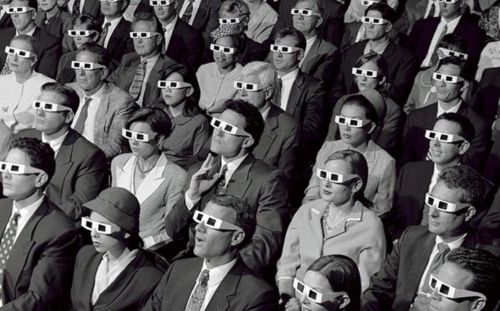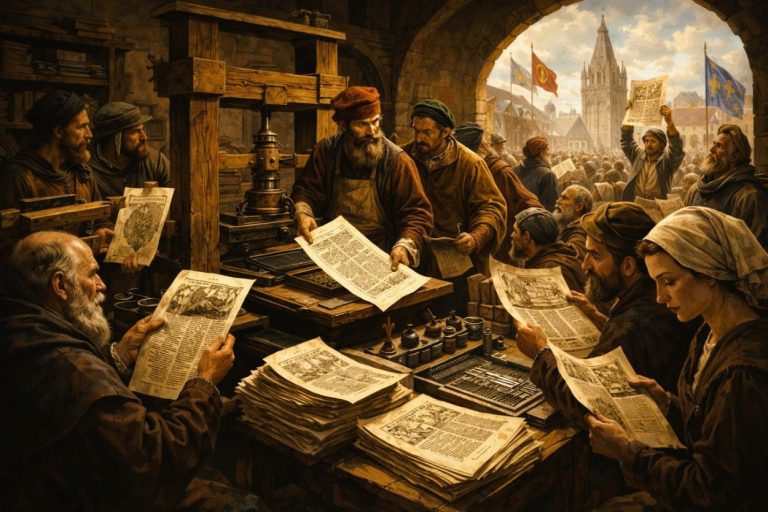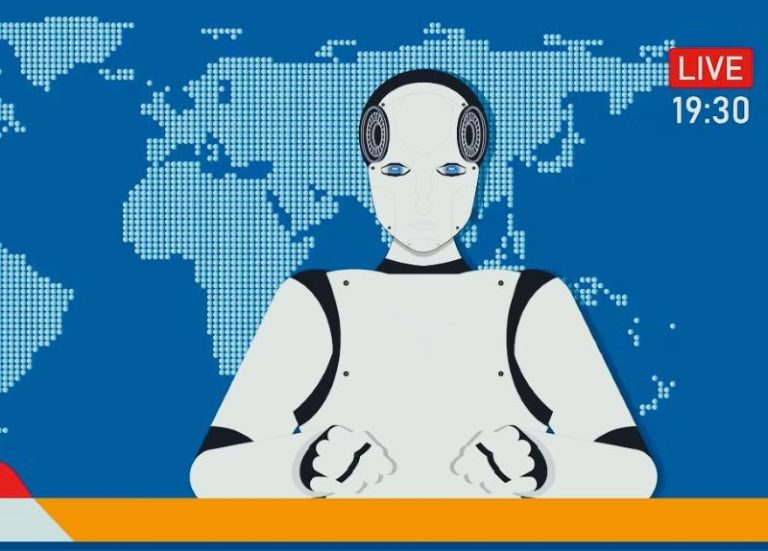

The old Iron Curtain was meant to keep people in and ideas out. The new one does the reverse: it lets information flow freely while shaping it so precisely that freedom itself becomes a façade.

By Matthew A. McIntosh
Public Historian
Brewminate
Introduction
In the twenty-first century, the barriers dividing nations and ideologies are no longer built from concrete and steel. They are engineered from code. Instead of sentries and fences, the new frontier of control is managed through firewalls, algorithms, and data restrictions that shape what citizens see, hear, and believe.
Governments and private entities now wield artificial intelligence to monitor dissent, suppress independent journalism, and spread propaganda with unprecedented efficiency. Freedom House’s 2023 Freedom on the Net report found that generative AI has become “a force multiplier for digital repression,” enabling regimes to automate censorship and flood social platforms with manipulated narratives.
In this emerging landscape, information is both weapon and wall. Where the old Iron Curtain divided East from West, today’s digital curtain divides reality itself, separating those with access to unfiltered knowledge from those enclosed within algorithmic echo chambers. The new methods of ideological gatekeeping no longer require brute force; they simply require control over the flow of data.
From Walls to Wires: The Shift from Physical Barrier to Digital Boundary
During the Cold War, authoritarian control was visible and tangible. Watchtowers, fences, and patrols defined the physical limits of ideology. The Iron Curtain symbolized not just geography but the division of truth, an admission that information was dangerous enough to wall off. Those barriers eventually fell. What replaced them, however, is subtler and more sophisticated.
Today’s power lies not in the barbed wire of territory but in the architecture of data. Nations that once censored newspapers or jammed radio frequencies now manipulate the very algorithms that shape public consciousness. Firewalls, keyword filters, and government-approved platforms form the new perimeter. In China, for example, an elaborate network of digital controls, including the Great Firewall, filters global content, while a parallel ecosystem of apps ensures state narratives dominate domestic conversation.
Yet China is not alone. Over two-thirds of the world’s internet users live under regimes that censor political, social, or religious content. Even in democratic nations, platform moderation and opaque recommendation systems have created new forms of dependency and constraint. The barrier is no longer the wall between nations but the digital filter between perspectives.
What once divided East and West now divides perception itself. The ideological boundaries of the twenty-first century are drawn in lines of code, defining not where people live but what they can know.
Mechanisms of Control: Censorship, Algorithmic Curation, and Data Dominance
Digital censorship today operates through an intricate web of algorithms, moderation policies, and artificial intelligence systems that together determine what information reaches the public sphere. Governments and corporations alike deploy these mechanisms to regulate visibility rather than openly ban expression. This form of control is quieter but more pervasive: instead of silencing a journalist, it buries their story beneath a mountain of manufactured content or prevents it from appearing in the first place.
The European Parliament has described this shift as the rise of “algorithmic authoritarianism,” in which state and private actors exploit data systems to engineer public opinion under the guise of efficiency or safety. A 2024 parliamentary analysis warned that predictive algorithms can reinforce political bias and reward conformity, gradually turning citizens into subjects of data governance. Platforms that optimize engagement may inadvertently amplify disinformation or extremist narratives while suppressing nuanced debate, a distortion that benefits those who already hold power.
This concentration of control within a handful of global intermediaries represents a profound threat to pluralism. Social media companies now act as ideological gatekeepers, deciding which words or images are acceptable within their ecosystems. Their moderation systems, often guided by proprietary AI models, can erase entire contexts in the name of policy compliance. When human judgment is replaced by opaque automation, the border between protecting users and policing thought becomes nearly invisible.
Evidence of this transformation is clearest in countries where censorship has become technologically seamless. Reporters without Borders found that Chinese chatbots, designed with strict government oversight, refuse to answer questions about democracy, human rights, or political prisoners. In Russia, state-aligned platforms filter search results to exclude critical journalism. In both cases, AI is not merely enforcing censorship; it is shaping a world in which dissenting ideas appear never to have existed.
These systems together constitute a new hierarchy of information. The power to filter, prioritize, and recommend content has replaced the power to forbid it outright. The result is a society that believes itself free because the fences are invisible, even as its boundaries are carefully drawn by the unseen logic of code.
Narrative Manipulation and Propaganda in the Era of AI
If censorship limits what people can see, propaganda determines what they believe. Artificial intelligence has supercharged both. Where twentieth-century regimes relied on newspapers and broadcast radio to shape ideology, modern propagandists wield neural networks that generate persuasive text, deepfake videos, and synthetic voices at industrial scale. OpenAI identified coordinated influence operations in Russia, China, Iran, and Israel that used generative AI to produce propaganda en masse, flooding social platforms with narratives that mirrored official state positions.
These operations no longer depend on state-run media alone. They infiltrate the same networks that sustain everyday communication, blending falsehood and truth so seamlessly that detection becomes nearly impossible. Analysts at the Carnegie Endowment for International Peace warn that democracies now face an “erosion of trust” resulting from an environment of foreign interference in which generative models can manufacture entire political movements or crises overnight. A single deepfake, released at the right moment, can shift public sentiment or undermine an election.
Unlike the blunt propaganda of the past, AI-driven manipulation personalizes persuasion. Algorithms study user behavior to identify emotional triggers and deliver tailored narratives that confirm preexisting biases. This approach, often described as computational propaganda, transforms propaganda into an individualized experience, propaganda that feels like discovery. The Oxford Internet Institute has documented how such systems weaponize personalization to erode trust in democratic institutions while maintaining the illusion of autonomy.
Authoritarian governments have perfected the tactic, but private entities have learned to exploit it as well. Social media companies design engagement loops that privilege outrage and sensationalism, effectively creating feedback systems that reward division. Even without direct political intent, these structures mirror the goals of propaganda: to capture attention and guide collective behavior. The result is not mass persuasion through slogans, but mass confusion through saturation.
The battleground of the twenty-first century is therefore psychological as much as political. The new propagandist does not demand belief, they only need disbelief in everything else. When truth itself becomes one voice among thousands of simulations, control no longer requires coercion. It requires noise.
Data Control, Access Limitations, and “Soft” Boundaries
The most effective form of censorship today is not deletion but distortion. Modern information systems increasingly operate through what analysts call soft control, subtle restrictions that shape access and visibility without appearing overtly repressive. Governments and corporations no longer need to block a website when they can quietly downgrade it in search results, remove it from recommendation feeds, or flood the same query with sponsored narratives that push it out of view.
The Organization for Security and Co-operation in Europe (OSCE) has warned that algorithmic filtering can narrow civic discourse under the pretense of personalization. What users see is determined not by editorial transparency but by predictive modeling that assumes their preferences, political leanings, or emotional states. In this way, access itself becomes a privilege, a selective lens shaped by unseen priorities. Citizens may believe they are freely exploring information when, in reality, they are being guided through a curated corridor of acceptable thought.
This quiet architecture of control thrives because it feels voluntary. The Freedom House 2023 report found that most users remain unaware of how content prioritization limits diversity of perspective. Data brokers and advertising algorithms build detailed behavioral profiles, allowing both private firms and governments to target individuals with tailored messages that exploit their vulnerabilities. What once required a secret police now happens through dashboards, metrics, and market segmentation.
Access limitations also take the form of information inequality. Wealthier nations and elites enjoy the benefits of open data ecosystems, while marginalized or censored populations encounter restricted digital environments. In places such as Iran and Myanmar, governments have repeatedly throttled internet bandwidth or shut down mobile networks to prevent the spread of protest information. These interruptions rarely make international headlines, but each one redraws the map of who can speak and who must remain silent.
The consequence of these soft boundaries is an illusion of freedom within invisible constraints. There are no guards or gates, only the quiet hum of algorithms deciding which truths are too inconvenient to surface. The fence, once made of iron and wire, has dissolved into code, and that very invisibility makes it harder to resist.
Impacts on Society, Free Expression, and Ideology
The rise of digital information control has reshaped not only what people know but how societies think. When access to truth becomes contingent on algorithms and opaque corporate policies, democratic discourse begins to fracture. Citizens cannot deliberate meaningfully if the facts they receive are filtered through unseen hierarchies of trust and manipulation. At least forty-seven governments now deploy artificial intelligence for social surveillance or censorship, often under the banner of national security or “public order.” The result is an environment in which self-censorship flourishes, people moderate their own words out of uncertainty about who might be watching.
This atmosphere of quiet restraint corrodes the foundations of free expression. The chilling effect once produced by fear of imprisonment now arises from fear of irrelevance, of being de-ranked, de-monetized, or de-platformed. Independent journalists and researchers face mounting obstacles as their work competes against algorithmic incentives that reward engagement over accuracy. The OSCE notes that when visibility becomes the currency of communication, truth loses its market value. Public debate is flattened into a contest for clicks, and complexity gives way to virality.
At the ideological level, these mechanisms serve as modern gatekeeping. States and corporations define acceptable discourse by shaping which stories gain traction and which vanish. In authoritarian systems, this produces conformity; in democracies, it breeds polarization. In both cases, the effect is to shrink the space where dissent and nuance can coexist. The Carnegie Endowment for International Peace warns that as algorithmic governance spreads, ideological monopolies may emerge, not enforced by law, but by design.
What emerges, then, is a world less defined by competing truths than by managed perception. The freedom to speak remains, but the freedom to be heard diminishes. As data control hardens into habit, pluralism risks becoming performative, a simulation of debate within preapproved boundaries. The danger is not that societies will cease to communicate, but that they will no longer realize how little they are saying.
Response and Risks: What Is at Stake and What Can Be Done
If the new iron curtain is made of data, its dismantling will require transparency, oversight, and public awareness rather than sledgehammers. The most urgent task is to expose how these systems function, how algorithms decide what is amplified or erased, and who benefits from those choices. The Freedom House 2023 report argues that democratic societies must embed human rights protections into the design and governance of artificial intelligence, ensuring that technology serves civic pluralism rather than political control. Without structural accountability, even well-intentioned safeguards risk hardening into new forms of quiet censorship.
Regulatory reform alone, however, cannot solve a problem rooted in cultural complacency. Citizens must develop the literacy to recognize manipulation when they encounter it. The OSCE emphasizes the need for digital education programs that teach users to question algorithmic recommendations and verify online information through multiple, independent sources. Awareness may be the only defense left when the mechanisms of control have become invisible. In this sense, digital literacy is not simply a skill but a form of resistance, the cognitive equivalent of crossing the old border fence.
At the institutional level, media outlets, universities, and civil organizations play a crucial role in preserving open discourse. Independent journalism remains the most reliable counterweight to automated propaganda, yet it requires both funding and legal protection. Collaboration among civil societies across borders, including data-rights initiatives and transparency coalitions, can push back against the privatization of truth. Such alliances form the modern equivalents of the underground presses that once smuggled ideas through barbed wire.
The stakes extend far beyond technology. What is being contested is the definition of reality itself: who constructs it, who controls it, and who gets to question it. The failure to confront this new architecture of control risks replacing the free exchange of ideas with a marketplace of illusions. The challenge is not only to keep information flowing, but to ensure that what flows remains authentic, verifiable, and free from capture by those who would profit from silence.
The New Curtain Closes
The old Iron Curtain was meant to keep people in and ideas out. The new one does the reverse: it lets information flow freely while shaping it so precisely that freedom itself becomes a façade. The power once enforced through armed patrols now resides in recommendation engines, automated filters, and predictive algorithms that decide what reality looks like on a screen. Each scroll and click tightens the unseen mesh, until citizens believe they are exploring the world while walking the length of an invisible wall.
The transformation is both profound and perilous. The Freedom House study calls this a race between technology and democracy, warning that artificial intelligence is redefining the relationship between citizen and state faster than governance can adapt. What began as tools for connection have become instruments for containment. Propaganda, surveillance, and censorship have merged into a single ecosystem of influence, efficient, profitable, and often untraceable.
Yet the curtain is not impenetrable. History shows that control always carries within it the seeds of defiance. Open-source investigators, independent journalists, and digital-rights advocates continue to expose the structures that hide behind convenience and personalization. The struggle for a free internet, like that for a free press, depends on vigilance, on insisting that truth remain a public good, not a proprietary algorithm.
The barbed wire may be gone, but the contest over thought endures. The question now is whether citizens will learn to see the fences that no longer cast shadows, and whether, once they do, they will still remember how to climb.
Originally published by Brewminate, 10.27.2025, under the terms of a Creative Commons Attribution-NonCommercial-NoDerivatives 4.0 International license.


